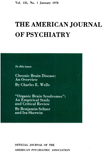USE OF THE ORGANIC INTEGRITY TEST (OIT) WITH CHILDREN WHO CANNOT READ
Abstract
The OIT has led the author to conclude that the human brain can better be understood and treated as a cross-correlation pattern recognition system in the cybernetic sense. With this view, he has attempted to unify the diverse phenomena of chromaphilia, reading disabilities, phonetic therapy and the processes of perception with a summarizing mathematical theory of pattern recognition by identity, which states that "an unknown form f is recognized as a known form g, if their cross-correlation pattern recognition index (PRI) is unity," that is:
If PRI (f, g) = 1, then f ≅ g.
This theorem can be proved by the Swartz inequality.1
This PRI theory requires a huge memory storage of known forms g, in order to recognize incoming unknown forms f, by cross-correlation pattern recognition. Practically, the PRI theory may be applied to biomedical engineering to build a pattern recognition system to solve computer pattern recognition problems—for automatic brain wave interpretation, as an example. Of course, the best all-purpose computer, a human brain with its ten billion neurons, can fill this order.
The PRI theory is fundamental enough, relating to the all-or-none law of neurophysiology, to explain the manner in which the human brain perceives patterns whether in health or in disease. It therefore not only explains reading disabilities but also unifies the basic concept of brain damage, schizophrenia, mental deficiency and other neuropsychiatric disorders as one of decreased ability to perceive form, revealed as chromaphilia on the OIT.
With the PRI theory as a guide and the OIT as a diagnostic technique and finally the A E I O U & Y as a method of teaching reading, it is now feasible to initiate carefully a pilot program of early detection and inoculation against reading disabilities as vaccines are given to prevent polio and smallpox in children of any community.
Access content
To read the fulltext, please use one of the options below to sign in or purchase access.- Personal login
- Institutional Login
- Sign in via OpenAthens
- Register for access
-
Please login/register if you wish to pair your device and check access availability.
Not a subscriber?
PsychiatryOnline subscription options offer access to the DSM-5 library, books, journals, CME, and patient resources. This all-in-one virtual library provides psychiatrists and mental health professionals with key resources for diagnosis, treatment, research, and professional development.
Need more help? PsychiatryOnline Customer Service may be reached by emailing [email protected] or by calling 800-368-5777 (in the U.S.) or 703-907-7322 (outside the U.S.).



